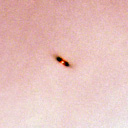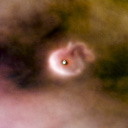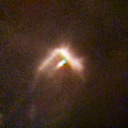File:Orion Nebula with proplyd highlights (captured by the Hubble Space Telescope).jpg

本预览的尺寸:800 × 525像素。 其他分辨率:320 × 210像素 | 640 × 420像素 | 1,024 × 672像素 | 1,280 × 840像素 | 2,560 × 1,680像素 | 15,503 × 10,176像素。
原始文件 (15,503 × 10,176像素,文件大小:99.1 MB,MIME类型:image/jpeg)
文件历史
点击某个日期/时间查看对应时刻的文件。
| 日期/时间 | 缩略图 | 大小 | 用户 | 备注 | |
|---|---|---|---|---|---|
| 当前 | 2009年12月18日 (五) 16:14 |  | 15,503 × 10,176(99.1 MB) | Tryphon | {{Information |Description=The en:Orion Nebula is home to tens of what could be fledgling en:planetary systems. In this image, six of these modest "smudges" with big potential are highlighted (from top down): [[:File:Proplyd 132-1832 in the Or |
文件用途
以下页面使用本文件:
全域文件用途
以下其他wiki使用此文件:
- ar.wikipedia.org上的用途
- en-two.iwiki.icu上的用途
- eu.wikipedia.org上的用途
- fi.wikipedia.org上的用途
- fr.wikipedia.org上的用途
- hi.wikipedia.org上的用途
- sv.wikipedia.org上的用途










